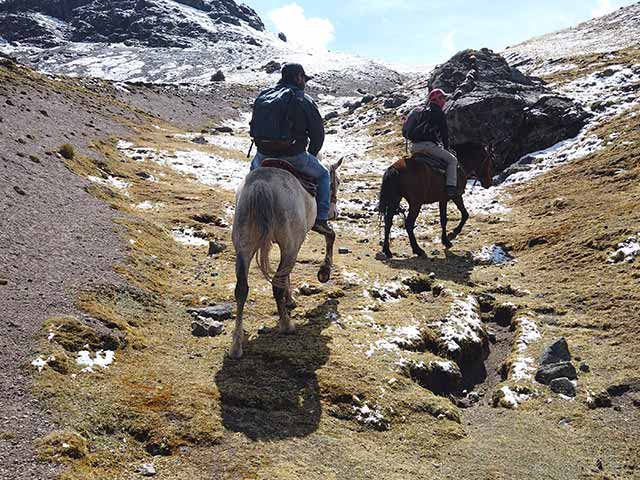Travel Guide
CHOQUEQUIRAO is an archaeological site that has been discovered, a little-known and precarious place that is regularly visited by national and foreign tourists. Choquequirao is also known as the sacred sister of Machu Picchu. Therefore, it is a large archaeological complex with buildings, temples and terraces, and it is also located on top of a mountain. In addition to the archaeological site of Choquequirao, throughout the journey you will be able to appreciate beautiful landscapes and a great variety of flora and fauna unique in the world.
In this guide, you will learn how to get to the last Inca refuge and we will give you some tips for a smooth trip.
Where it is located?
The Choquequirao Archaeological site is located in the Vilcabamba mountain range, which is part of the Andes in southeastern Peru.
The monument is located on one side of the Qorihuayrachina mountain, on the right bank of the Apurimac River.
Its Greenwich Meridian geographic coordinates are: 72°53′ west longitude and 13°32′ south latitude.
Politically it is located in the jurisdiction of the District of Santa Teresa, Province of La Convección, Cusco Region, Peru.
How is the altitude?
Choquequirao is located between the jungle and the Peruvian Andes, it is located on a mountain with an altitude of 3,033 meters, it has a great characteristic: it can only be accessed on foot, 62 kilometers round trip and descending sections, from 3100 to 1400 and vice versa .
How to get to Machu Picchu?
To get to the archaeological site of Machu Picchu you have to choose two options, basically the choice is to do it on your own and the other is to hire an authorized agency. Whichever way to get to Choquequirao, below we detail the two ways to get to Choquequirao.
On their own
Doing the trek to Choquequirao on your own is a good alternative, however you will be committed to putting together your own itinerary and getting transportation and food since the regular trek to Choquequirao is 4 days, however you can do this tour in three days but you have to be in good physical condition.
By Agency
It is the simplest way to make the trek to Choquequirao, the agencies have everything organized such as transportation, porters, food, guidance, etc. makes this journey unique for every traveler who visits the archaeological complex of Choquequirao.
Best time to travel to Choquequirao
The best time to visit this archaeological complex is from April to October during this period is the dry season and it is advisable to do this walk.
What to bring on your trip to Choquequirao
It is essential to bring sunscreen as well as repellent and it would not hurt to wear glasses and a cap or hat to cover your head. In addition to your camping equipment (flashlight, tent, kitchen utensils, medicines and purifying pills, rain poncho, ventilated clothing and a coat), don’t forget to bring trekking shoes, of course a good camera and extra money.










 5 (12 reviews)
5 (12 reviews)


